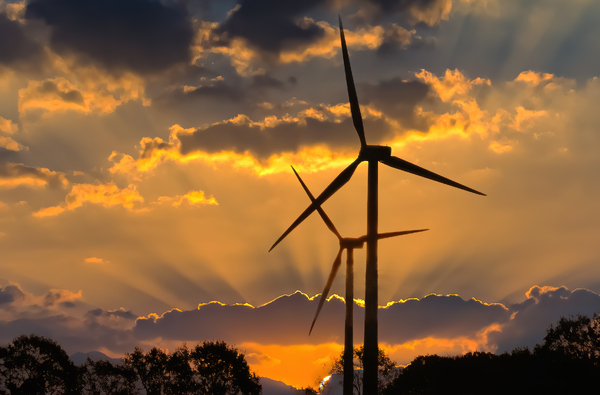Reshaping the energy landscape with carbon markets

ESCP students Omkar Kajrolkar and Raghav Sharma share their insight into the key elements and roles of carbon markets in reshaping the energy landscape and contributing to the goals of The Paris Agreement
As the global push for climate change mitigation intensifies, both compliance and voluntary carbon markets are emerging as powerful tools to drive sustainability efforts.
The Paris Agreement, adopted in 2015, serves as a blueprint for global climate action. The treaty aims to keep the global temperature increase well below 2°C, ideally limiting it to 1.5°C above pre-industrial levels. Achieving these targets requires a global shift from fossil fuels to clean energy.
Carbon markets, through pricing carbon emissions, are an emerging tool designed to incentivise businesses to pollute less and invest in cleaner technologies to reduce greenhouse gas (GHG) emissions.
Compliance carbon markets
Compliance carbon markets operate under government mandates, imposing a cost on businesses for their emissions, aiming to control the supply of fossil fuels. They typically include two main mechanisms:
- Cap and trade systems: Companies are given a pollution cap, and they can buy or sell carbon credits depending on their emissions. This creates a market where the price of carbon is dictated by supply and demand.
- Carbon taxes: Governments impose a fixed price per tonne of carbon emitted, incentivising companies to reduce pollution to lower their tax burden.
Prices in emissions trading schemes (ETSs) and carbon taxes saw a slowdown after years of sharp increases, but displayed resilience despite a difficult global energy crisis in 2022. In fact, global government revenue from carbon pricing instruments (ETSs and carbon taxes) generated over $95 billion in revenue that year, 40% of which was earmarked for green initiatives like carbon capture projects.
Carbon pricing mechanisms encourage businesses to adopt clean energy solutions, promoting technological advancements in carbon capture and storage (CCS) and energy optimisation. Revenues from carbon auctions or permit sales further accelerate the transition by funding green infrastructure and research initiatives.
However, challenges remain. Carbon leakage, where companies move operations to jurisdictions with lax carbon regulations, and social equity issues need to be addressed to ensure a just transition.
There is also a growing need for international cooperation to prevent carbon leakage through mechanisms like the Carbon Border Adjustment Mechanism (CBAM), which imposes a tax on imports from countries with weaker carbon pricing.
The state of compliance carbon markets
As of 2023, there are 73 carbon pricing mechanisms worldwide, covering 23% of global GHG emissions. This figure represents a minor increase from previous years but underscores the growing commitment to carbon pricing globally. Some countries, such as New Zealand, are pioneering efforts to price agricultural emissions, while the EU is using revenue from its ETS to fund clean technology innovation.
Looking forward, compliance markets are expected to expand as more countries implement carbon pricing mechanisms. As these markets mature and governments further tighten emission caps, carbon prices will likely rise, spurring further investment in low-carbon technologies and reducing reliance on fossil fuels.
There will also be a greater emphasis on ensuring the environmental integrity of carbon markets, with enhanced monitoring, reporting and verification mechanisms to ensure transparency.
Voluntary carbon markets
While compliance markets are mandated by law, voluntary carbon markets are driven by corporations and individuals who seek to offset their carbon footprints or meet sustainability goals. These markets enable participants to purchase carbon credits from projects that reduce or remove emissions, such as reforestation initiatives, renewable energy installations, or carbon capture technologies.
There are three main crediting mechanisms within voluntary carbon markets:
- International crediting mechanisms: These follow frameworks like the Clean Development Mechanism (CDM) under the Paris Agreement.
- Domestic crediting mechanisms: These are established by national or subnational governments.
- Independent crediting mechanisms: These are often set up by non-governmental entities like Verra and Gold Standard, which dominate the voluntary market.
Voluntary markets play a crucial role in funding renewable energy projects and nature-based solutions, particularly in developing countries. They provide a way for companies and individuals to take responsibility for their emissions, even if they aren’t legally obligated.
Role of voluntary markets in energy transition
Voluntary carbon markets are increasingly important in the global energy transition. The sale of carbon credits helps fund renewable energy projects and supports reforestation efforts that remove carbon dioxide from the atmosphere.
These markets are also critical for financing energy efficiency projects in developing countries, helping to meet growing energy demands without increasing emissions.
Despite their potential, voluntary carbon markets face significant challenges. A lack of transparency and credibility has led to public scepticism, with some questioning the integrity of carbon credits.
In 2022, stricter regulations led to bottlenecks in the supply chain, with delays in the issuance of carbon credits due to a shortage of accredited validators and verifiers. However, as the market evolves, efforts are underway to improve transparency and credibility.
The future of voluntary carbon markets
The future of voluntary carbon markets looks promising, with increasing diversity and regulatory improvements. As stakeholders become more aware of climate change, demand for carbon credits is expected to rise. New financial models and investment mechanisms will make it easier for project developers to access financing, further expanding the market.
In addition, greater standardisation and the development of trading platforms will enhance market liquidity, making it easier for participants to buy and sell carbon credits.
A sustainable future
Compliance and voluntary carbon markets are both crucial in addressing climate change and promoting a sustainable, low-carbon future. Compliance markets, through mechanisms like cap-and-trade systems and carbon taxes, provide a regulatory framework that incentivises businesses to reduce emissions.
Voluntary markets, on the other hand, enable companies and individuals to offset their carbon footprints while supporting renewable energy and nature-based solutions.
Both markets face challenges, from carbon leakage and social equity issues in compliance markets to transparency concerns in voluntary markets. However, with continued regulatory improvements and international cooperation, carbon markets have the potential to play a key role in achieving the goals of the Paris Agreement and mitigating the worst impacts of climate change.
Omkar Kajrolkar and Raghav Sharma are students reading for ESCP’s MSc in Energy Management. The full paper on this topic can be downloaded from ESCP’s Energy Management Centre
Main image courtesy of iStockPhoto.com and Sakorn Sukkasemsakorn

Business Reporter Team
Most Viewed
Winston House, 3rd Floor, Units 306-309, 2-4 Dollis Park, London, N3 1HF
23-29 Hendon Lane, London, N3 1RT
020 8349 4363
© 2025, Lyonsdown Limited. Business Reporter® is a registered trademark of Lyonsdown Ltd. VAT registration number: 830519543





